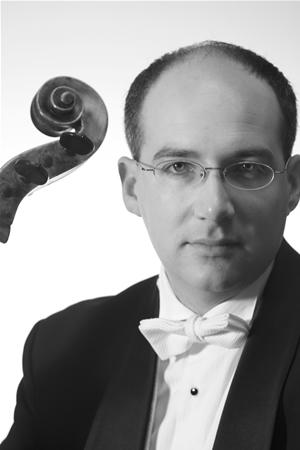The Eastern Music Festival is based on the bucolic campus of Guilford College and it fields two full-sized all-student orchestras on Thursday and Friday nights under the designation Young Artists Orchestra. Dana Auditorium is one of the best venues in the state for acoustics and its stage was well filled with eager musicians. This performance was under the baton of EMF Music Director Gerard Schwarz and featured a finely scored French cello concerto by Camille Saint-Saëns and a massive, sprawling symphony by Dmitri Shostakovich.
Saint-Saëns founded the Société Nationale de Musique in 1871 in response to France’s ignominious defeat in the Franco-Prussian War. Along with such composers as Fauré, Franck, and Lalo, Saint-Saëns wanted to promote abstract musical forms to compete with German cultural dominance. French composers had focused upon ballet and opera after Berlioz’s pioneering efforts. One of the first fruits of this new movement was Saint-Saëns Cello Concerto No. 1 in A minor, Op. 33. Instead of the flippant and frivolous style of the Second Empire, this concerto has a more serious and weighty mood and has an original formal organization and very crafty and imaginative scoring. The composer uses the full orchestra for punctuation or when the cellist is not playing. Combined with some remarkably delicate, quiet scoring, this allows the low-pitched cello to project over or through the scoring for full orchestra. Saint-Saëns makes extensive use of Liszt’s technique of thematic transformations of motives heard in the opening bars of the work. All three allegro movements are linked together by transitions. Schwarz led his attentive players through an elegant and stylish interpretation with the balance between guest cellist Mark Kosower and orchestra perfectly judged. Phrasing was ideal and the dynamics were carefully gauged. Kosower was an outstanding interpreter and player. His intonation was precise, and his cello’s tone was gorgeous across the full spectrum of its sound.
During the Stalin era official Soviet dogma cast a jaundiced eye upon anything not fitting the mold of Socialist Realism. Dmitri Shostakovich’s Symphony No. 8 in C minor, Op. 65 is huge, the first of its five movements lasts about thirty minutes. Much of it is dominated by a brooding mood of tragedy. It was composed in the summer of 1943 and is dedicated to Yevgeny Mravinsky who led the premiere November 3, 1943. Despite Shostakovich’s public statement emphasizing the work’s overall “positive” outlook, the Eighth Symphony was openly attacked as “counter-revolutionary.” The work was only “rehabilitated” in 1957. The dotted rhythms of the cellos and bases in the opening of the first movement are reminiscent of the composer’s Fifth Symphony. Dynamics are strongly contrasted with sections of great delicacy set against the jack-booted martial sound of the large brass and percussion sections. The second movement is a forceful march-like scherzo, and a mechanical rhythm dominates most of the third movement. The viola section opens the deeply moving fourth movement Largo which is dominated by a passacaglia. The fifth movement’s quiet delicacy can be seen as an anti-climax or as “hope” haunted by tragedy.
Schwarz, an experienced Mahler conductor, led a profoundly considered interpretation. He held the orchestra together and sustained the musical lines across Shostakovich’s vast canvas. The students played their hearts out for him. Sections played with remarkable unity, such as the unison cellos and basses at the opening of the first movement or the aching viola melody that opened the largo. Highlights of the massive first movement were the delicate solo for just first violins playing as one, the high scream for the five horns about midway, and the overwhelming impact of the brass and percussion when they cut loose near the end. This symphony abounds with significant solos for principal players. A very few minor pinched notes did not distract from the long, moving English horn solo played by Lindsey Reymore in the first movement. Woodwinds were wonderful in the pungent second movement with fine solos by bassoonist Kyle Olsen and piccolo player Michael Hoover, with Jeffrey Moore leading the horns. In the remaining movements, bass clarinetist Peter Brauer and flutist Lauren Osaka stood out as did the sweet-toned violin of concertmistress Camille Poon and cellist Wesley Hornpetrie.












